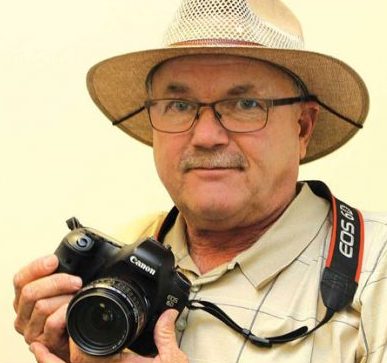As more people get their second shot of the Covid-19 vaccine, I’ve heard numerous reactions. Some say, “It was awful.” Others say, “I felt nothing.” Nearly everyone feels they have to weigh in on the topic, similar to when an earthquake rumbles through and most of us feel we have to take our turn at the podium to tell our account of what it was like.
My wife Sarah and I got our second dose three weeks ago. I’m in the “I felt nothing” group. Sarah had a sore arm, felt tired and woozy for a spell.
In California around 24% of the population has been fully vaccinated and around 18% have had one dose. Around three million people now get a vaccine shot each day in the U.S. Those big numbers serve as a foil to the cold facts that there have been 31 million cases of Covid-19 reported in the U.S. and roughly 559,000 deaths. California has reported 3.69 million cases with more than 60,000 deaths.
Officials say that once we’ve had our second dose, and wait out the two week safety period, we’re good for visiting others in the same situation.
Sarah and I have met our friends Lynn and Dan for a noon brunch on their patio, and our friends Dobie and Ann made dinner for us in their home. Not having to talk through that darned muffling mask and lose out on half of everyone’s facial expressions is a giant welcome return to normalcy, for starters.
But above that, there’s a tremendous sense of relief and assuredness that comes with that second shot. It’s not bulletproof, officials warn, but it sure gives a level of comfort and confidence.
There are many around us who aren’t going to get the vaccine for a number of reasons. Some say the virus is a hoax, and that the vaccine is part of a secret plan to imbed a microchip in everyone. Others say they won’t take it because they fear potential serious long-term side effects that might arise. Experts say that short-term side effects, from shivering and chills, to headaches and “brain fog,” are signs that the immune system is developing and mounting a strong and working response to the virus. But then folks like me, with no reactions, are wondering if a lack of side effects might mean the vaccine isn’t working.
In a New York Times article, Dr. Paul Offit, a professor at the University of Pennsylvania and a member of the Food and Drug Administration’s vaccine advisory panel, said that “you don’t have to have side effects in order to be protected.”
On Sunday, Sarah and I went to the Santa Cruz Beach Boardwalk because I needed a photo for the newspaper about some of their rides reopening after a year of pandemic shutdowns. While we were happy to see the place vibrant with life (and business) once again, it was alarming to see how crowded it got. While it looked like everyone was wearing a mask, even kids, the main pedestrian walkway was packed with people, sometimes shoulder to shoulder. We made it from one entranceway to the next exit and got out of there. My point being that we saw a good example of people yearning for a return to normalcy.
The NYT recently reported that around 64% of the U.S. lives in counties that have a very high or extremely high risk of exposure to the virus. Fortunately, in Santa Cruz County, our danger numbers are shrinking, but there’s serious talk in the national news of a fourth wave hitting the country.
We need to move cautiously.
On My Mind is a recurring column from Pajaronian reporter and photographer Tarmo Hannula. Contact Hannula at th******@********an.com.








